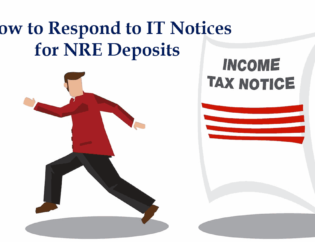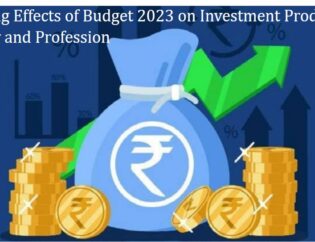 Union Budget (No 2) 2019 takes us a step closer to achieving short term goal of becoming a $5 trillion economy by 2024. The biggest theme of the budget was Connectivity. In addition, it also addressed liquidity issues, relaxed investment criteria and introduced key initiatives in R&D and education to pave way for better future for India.
Union Budget (No 2) 2019 takes us a step closer to achieving short term goal of becoming a $5 trillion economy by 2024. The biggest theme of the budget was Connectivity. In addition, it also addressed liquidity issues, relaxed investment criteria and introduced key initiatives in R&D and education to pave way for better future for India.These 4 themes/factors are analyzed for their overall effect on equity and debt investments and what a savvy investor should do for taking the maximum benefit in current situation.
1. Connectivity:
Connectivity is the lifeblood of the economy and HUGE Infrastructure investments are being made or proposed for ensuring and enhancing connectivity.
- Road connectivity through National Highways Program, state road networks and Gram Sadak Yojna
- PPP model in Railways for expediting development and completion of tracks
- Power connectivity with One Nation, One Grid and developing of gas grids.
- Water connectivity with Interlinking Indian rivers, creating water grid, improving port connectivity, developing national waterways and providing piped water connecting to every rural homes.
- Developing regional airports and providing Air connectivity to smaller cities
Effect:
Physical Connectivity (Road, Rail, Waterways, Air) with Electricity and data connectivity, would work wonders for the villagers and ultimately for the Indian economy.
Without road network, transport of goods / services in and out of villages may not be possible. If no electricity, no phone and without mobile phone and data, information regarding price, demand of their produce as well as requirement / availability of goods or services is not known. A connected village results in increasing productivity, enhancing jobs and labor market accessibility, opening new markets for businesses, enhancing supply chain efficiency, and ultimately improving life of villagers and also growing Indian economy.
2. Liquidity:
Indian economy has been struggling due to liquidity issues. Money rotation has reduced due to NBFCs issues, NPAs in banks, accounting irregularities as well as GST related issues. That is the reason that even if RBI decreased repo rate by 0.75%, the effective interest has not come down and the Small Savings rate came down only marginally by 0.10%.
The budget proposed many key initiatives to increase liquidity in the system as follows:
- Government guarantee to Public sector bank for purchase of high rated pooled assets of financially sound NBFCs amounting to Rs 1 lakh crore during the current financial year, for one time first loss of up to 10% for six months.
- Allocation of Rs. 70,000 crore for recapitalization of PSU Banks.
- Allowing all NBFCs to directly participate on the Trade Receivables Discounting System (TReDS)
- Issue of Sovereign bonds and raising funds in foreign markets in foreign currencies.
- Other: Allowing and/or Increasing limit of FII, FPI investment limits in debt, allowing AA rated bonds as collateral, setting up secondary market platform for corporate bonds, allowing retail investors in treasury securities, etc.
3. Increasing Limit for FDI & Equity Investments:
- The FDI limit in sectors like aviation, media (animation, AVGC), insurance and insurance intermediaries increased and local sourcing norms eased for FDI in Single Brand Retail.
- Increasing foreign investment limit in a company from 24% to sectoral foreign limit.
- Increasing Minimum Public shareholding in listed companies from 25% to 35%
- Global Investors Meet is to be organized in India to attract global pension, insurance and sovereign wealth funds for investing in India.
- Strengthening India’s sovereign fund National Infrastructure Investment Fund (NIIF) for infrastructure development for maximizing impact
- Benefits for Investing in and through units in IFSC (International Financial Service Center)
4. Education and R&D:
- “STUDY IN INDIA” initiative with bringing in a New Education Policy to transform India’s higher education system and increasing ranking and standards of Indian Institutes to feature in the top 200 in the world university rankings.
- Setting up of National Research Foundation (NRF) to strengthen overall research eco-system and to fund, coordinate & promote research integrating various Ministries without duplication of effort and expenditure.
Effect: The Government is realizing that for any country to grow, investment and commitment for education and R&D are must. These initiatives will help India to produce scientific scholars and business entrepreneurs making a way for better tomorrow.
Summary of Overall Effect/ Our view:
- India has a bright future ahead under the visionary leadership of Mr. Modi and offers tremendous investment opportunity for a long term equity investor.
- However, the equity market may go down (price correction) or be volatile but remains the same (time correction) in a short term due to slowing economy, increase in income tax surcharge, increase in future supply of equity shares (25% to 35% public shareholding)
- We also expect repo rate to go down by 0.50% and the effective interest rates to come down by 1-1.5% by March 2020.
How to Invest:
- Investors of Bank FDs: Renew for higher term i.e. instead of 1 year, book 5 year FD
- Investors of Debt MF: The return will increase as interest rate goes down so invest carefully considering your tax rate, foreign reporting, interest rate expectation, etc.
- Equity Investors: Current time may not be a right time to invest lumpsum. It may be advisable either to wait or to stagger your investment i.e. invest using STP or SIP. As no one knows the future, I prefer staggering your investment while investing in equities.








